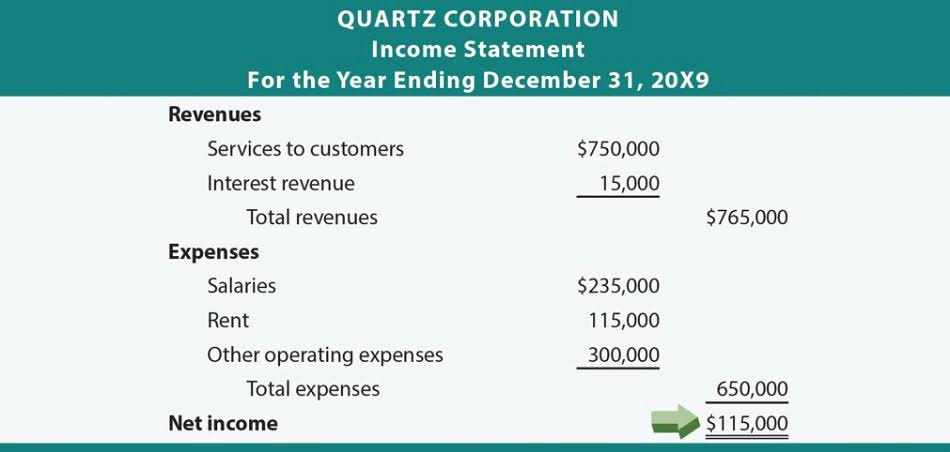
Mastering audit risks in today’s fast-paced and complex financial environments requires a forward-thinking approach that embraces innovation such as audit management software. Auditors use cutting-edge tools and procedures to meticulously identify audit risks and maintain the accuracy of financial reporting. Through a comprehensive understanding of audit risks — including inherent, control, and detection risks — auditors are better equipped for audit engagements that ensure the accuracy of financial statements. The dynamic interplay between inherent risk, control risk, and detection risk under the ARM framework guides auditors in tailoring their audit approach.
Paragraph 1: Opinion on the Financial Statements
These measures act as a safeguard, ensuring that the audit process is thorough, unbiased, and reflective of the entity’s financial standing. The following is one of the best audit materials that could help you better understand audits in more depth and detail. With each of these areas, make sure to https://www.bookstime.com/ document the steps you took to gain an understanding, any changes to your understanding of the client from previous years as well as risks identified and whether they are significant. The auditor’s letter follows a standard format, as established by generally accepted auditing standards (GAAS).
Examples of Detection Risks in Auditing
The independent and external audit report is typically published with the company’s annual report. The auditor’s report is important because banks and creditors require an audit of a company’s financial statements before lending to them. Describe the audit risks and explain the auditor’s response to each risk in planning the audit of XYZ Co.
- Let’s assume you already have a better understanding of audit risks and let’s check the above if you are still not sure.
- Another concern is that, since every input to the equation is subjective, how can we realistically expect to multiply and divide them?
- The auditor will also assess the leadership of the management team as well as the entity’s culture.
- This uniformity is essential for maintaining the quality and reliability of the audit process, reducing the potential for oversight and errors.
Free Accounting Courses
Inherent risk is also more likely when the transactions in which a client engages are highly complex, and so are more likely to be completed or recorded incorrectly. Finally, this risk is present when a client engages in non-routine transactions for which it has no procedures or controls, thereby making it easier for employees to complete them incorrectly. In the strict field of reviewing financial statements, detection risks show how likely it is that auditors will miss critical mistakes despite employing their best efforts following auditing standards. A common example arises in the context of complex financial transactions, where the intricate nature of the transactions themselves could obscure significant misstatements from the auditor’s view. This is particularly pertinent when audit sampling — a technique widely used to infer the accuracy of financial records — is deployed. The risk that the selected samples are not representative of the entire population introduces a potential for overlooking material errors or fraud.
Auditing Model Risk Management

This book is authored by well-known authors in audit, accounting, and finance areas, Karla M. Johnstone, Ph.D., C.P.A. The author holds a Ph.D. in accounting and information systems. The risk is normally high if the transaction even involves highly human judgment—for example, the exposure to the complex derivative instrument. An additional paragraph may inform the investor of the results of a separate audit on another function of the entity. The investor will key in on the third paragraph, where the opinion is stated.
New Internal Audit Foundation Report Finds Changing Risk Landscape Will Require Shift in Hiring Trends
By applying this model, auditors can allocate their efforts and resources to target the areas of highest risk. This strategic application of the Audit Risk Model is instrumental in guiding auditors through the complex landscape of financial auditing, enabling them to navigate risks with precision and confidence. The judicious application of audit procedures and technologies enables auditors to effectively manage and mitigate audit risk, culminating in an audit opinion grounded in thorough analysis and deep insight. This dedication to risk assessment and management underscores the pivotal role of internal controls and strategic planning in achieving financial statement precision and reliability. By doing so, they position themselves at the forefront of the profession, ready to tackle audit risks with confidence and precision. Auditors must navigate these complexities by leveraging their expertise, CPA training, and audit management technology to enhance the collection and analysis of audit evidence.
Financial Statements of audit risk model
Candidates must understand the syllabus outcomes, understand what the question requirements involve and practise risk questions prior to the exam. Also, auditor responses should not be too vague such as ‘increase substantive testing’ without making it clear how, or in what area, this would be addressed. Since a company’s assets and liabilities are listed, it is easy to see what they owe. Balance sheets answer if the company has enough cash to meet its demands, if its assets are liquid enough, and if it has taken on too many liabilities. As businesses brace for the future, replete with uncertainties and opportunities, the importance of robust audits cannot be understated. They want to align with businesses that uphold integrity and showcase genuine corporate responsibility.
Before we say whether or not audit risk is calculable, let’s see the model first. Auditors use analytics software to analyze large volumes of financial data quickly and accurately. They can identify patterns, trends, and outliers indicating potential issues or irregularities, ensuring a more targeted and efficient audit process. The auditor assesses the risks at the entity control level and deep dives into the risks related to the activities control level that could significantly affect the quality of financial information.
At this stage, the auditor might understand the client nature of the business, major internal control over financial reporting, financial reporting system, and many more. Certain guidelines could help auditors minimize detection risks so that the audit risks are also subsequently minimized. The common cause of detection risk is improper audit planning, poor engagement management, wrong audit methodology, low competency, and lack of understanding of audit clients. Many companies use analytics tools to help them study financial statements and perform risk assessments to facilitate more intelligent decision-making.
- For example, those businesses that involve more with hedge accounting tend to have higher inherent risk than those of trading companies.
- Complete the form below and our business team will be in touch to schedule a product demo.
- So, if their assessment of the risk of material misstatement and audit risk is high, they must reduce the detection risk in order to contain overall audit risk within acceptable level.
- Audit risk is a function of the risks of material misstatement and detection risk’.
- All relevant inherent risks that might affect the financial statements are identified and rectified on time.
- Balance sheets answer if the company has enough cash to meet its demands, if its assets are liquid enough, and if it has taken on too many liabilities.
- The income statement highlights which areas the company spends too much for.
- The risk assessment phase is integral to the complex financial auditing process.
- The detection risk of audit evidence for an assertion failing to detect material misstatements is 5%.
- Enron was regularly audited by what was perhaps the most respected auditing organization in the world, but it was still able to misreport figures and ended up losing money for hundreds of thousands of people.
- Likewise, the auditor needs to reduce audit risk to acceptable low to make sure that they do not fail to detect any material misstatement that happens to the financial statements.
These technological advancements, while offering a slew of advantages, also usher in a new set of challenges. The risk of digital manipulation, cyber-attacks, and data breaches adds another layer of intricacy to the audit process. In light of these challenges, the traditional audit risk model, though foundational, may require augmentation. The three primary risks – control, detection, and inherent – remain at the core, but the contexts in which they operate are evolving rapidly. Detection risk is the risk that audit evidence for any given audit assertion will fail to capture material misstatements.